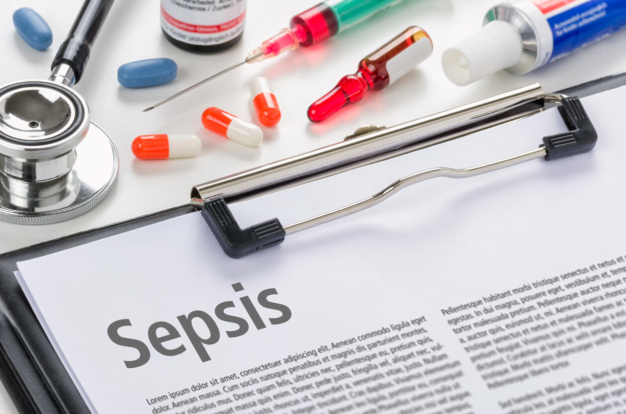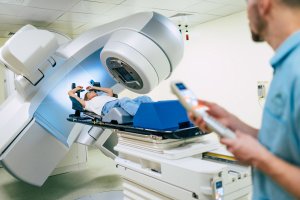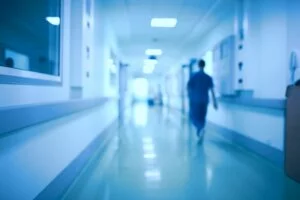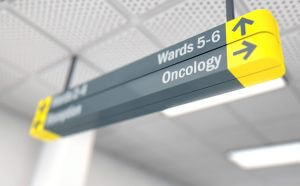Greater Awareness of Sepsis Needed

Contact
Table of Contents
Greater awareness of Sepsis can lead to better outcomes
As medical negligence lawyers, we were particularly interested to hear about the steps responsible medical practitioners should take to identify Sepsis as early as possible and learn about how early identification and treatment can lead to better outcomes and avoid sepsis negligence claims.
What is Sepsis?
There is no accepted definition of sepsis, and the definitions used have changed many times over the years. However, Professor Klein of Great Ormond Street Hospital gave the most useful definition, and one which is most commonly used nowadays, as follows:
“Sepsis is an acute, non-specific, generalised, whole body, inflammatory response to infection”
It was interesting to learn that the infection itself is not the problem in patients with Sepsis (although the source of the infection does need to be controlled), but rather the body’s response to such infection. In the most severe cases, the body’s response can lead to multi-organ failure and even death.
Why is Sepsis so hard to spot?
Diagnosing sepsis early is challenging. Symptoms in the first 4–6 hours often mimic other common illnesses, like the flu or a cold. This makes it easy to overlook in general practice, where GPs may only see one sepsis case per year.
According to Dr Mike Ingram, GPs must:
- Take and record key observations: Respiratory rate, blood pressure, temperature, pulse, and oxygen saturation can reveal early warning signs.
- Compare observations: Looking at changes over time helps identify deterioration.
- Trust their instincts: A GP’s ‘gut feeling’ that something is seriously wrong is often the most reliable warning.
- Use sepsis toolkits: The Sepsis Trust provides structured guidance to help GPs identify and respond to sepsis.
Common GP failings in Sepsis cases
Dr Ingram highlighted frequent issues that could lead to medical negligence claims:
- Failing to record or interpret vital signs correctly.
- Mistaking symptoms for gastroenteritis without ruling out sepsis.
- Lack of continuity of care when patients see different GPs.
- Not listening to patient concerns (e.g., “I’ve never felt this unwell before”).
- Over-relying on telephone consultations instead of in-person assessments.
- Making premature diagnoses without adequate safety netting.
From a Claimant lawyer’s perspective and in light of the above, the client’s medical notes should be closely scrutinised to identify instances where a GP’s care can be said to have fallen below what can be reasonably expected.
The impact of Sepsis
Dr James Stone, Consultant Medical Microbiologist, explained the complex progression of sepsis. It affects multiple organs and accelerates quickly. Early treatment with antibiotics and IV fluids can be life-saving, but even delayed intervention can still improve outcomes.
US guidelines recommend starting IV antibiotics within one hour of recognising sepsis or septic shock. Delays increase both short-term and long-term complications.
Dr Stone also warned that causation in sepsis negligence claims can be difficult to prove, especially in non-fatal cases. Lawyers must build detailed timelines and consult medical experts to assess:
- The bacteria’s growth stages (inoculation, lag phase, log phase).
- The host’s inflammatory response and resulting tissue damage.
Defendants often argue that poor outcomes were inevitable due to:
- Late presentation.
- Pre-existing conditions.
- Infection with rare or drug-resistant bacteria.
The importance of post-Sepsis care
Dr Carl Waldmann, an ICU Consultant, stressed that most sepsis patients require intensive care and organ support. Recovery doesn’t end at discharge. NICE guidelines now require that all ICU patients receive a structured rehabilitation plan.
Unfortunately, there is a nationwide gap in rehabilitation services. Dr Waldmann set up an ICU follow-up clinic in Reading to fill this gap, and other hospitals are now following suit.
From a legal perspective, it is essential to ensure that patients receive appropriate aftercare. Failure to arrange proper follow-up or rehabilitation can also form the basis of a negligence claim.
Real-life Sepsis case study: £70,000 settlement
Jodi Newton, Solicitor in our medical negligence team, recently settled a sepsis claim for £70,000. Our client underwent chest surgery but was discharged too early due to a mislabelled swab that showed signs of infection. Days later, he was readmitted with severe complications including brain abscesses. If the swab had been correctly labelled, intravenous antibiotics would have been administered, and he would likely have avoided permanent neurological damage.
Jodi commented:
Our client initially complained to the hospital; however, his complaint was generally rebuffed and he felt he had no alternative but to instruct solicitors. We obtained evidence from a cardio-thoracic surgeon, a microbiologist and a neurologist, who were all supportive of the claim. After we served a Letter of Claim, the Trust denied liability and we therefore served court proceedings, which were also defended.
We made an offer to settle this case. However, the Defendant responded by inviting our client to discontinue his case. About six months later, however, the case was successfully settled for a sum of £70,000 even though the Defendant continued to maintain its denial of liability.”
Raising awareness: The Sepsis Trust
One of the final talks of the afternoon was given by Liz Truss, a survivor of Sepsis and a volunteer for the Sepsis Trust, which exists to raise awareness of Sepsis. Liz gave the frightening statistic that over 40,000 people die as a result of Sepsis every year in the UK, and stressed the importance of always asking the question to medical professionals if you or a loved one suddenly becomes very unwell, “could it be Sepsis”.
Figures from The UK Sepsis Trust highlight that five people die from Sepsis every hour in the UK, and 40% of survivors are left with life-changing effects. For more information on how to spot the symptoms of sepsis, please visit their website.
Thinking about a Sepsis claim?
If you or someone you care for has suffered due to delays or errors in the diagnosis or treatment of sepsis, you may have grounds to bring a clinical negligence claim.
Contact Jodi Newton or another member of our medical negligence team. We will be happy to have a confidential conversation with you and advise you of any next steps. Contact us by:
- Filling in our online enquiry form; or
- Calling us on 020 7485 8811
Share this article
“Small but very effective and experienced team so every client benefits from the personal touch but also highly skilled litigation know-how. Capability of the team means they can handle all aspects of very complex cases as well as straightforward matters.”
“Osbornes Law is an established firm which handles a breadth of complex and high-value clinical negligence matters.”
Contact us today
Call us 020 7485 8811
Email us Send us an email and we’ll get back to you
Related InsightsVIEW ALL
- 17.7.2024
Settlement for Delay in Wrist Fracture Treatment
Our Clinical Negligence team have recently agreed the settlement of a case relating to a delay in the treatment of...
Read more - 5.1.2024
Delayed Pre-Eclampsia Diagnosis Results in Loss of Baby
Introduction to the case Nick Leahy, Associate in our Clinical Negligence department, has recently settled a birth injury claim against...
Read more - 21.9.2023
Large Compensation for Delayed Laryngeal Cancer Diagnosis
Actress receives financial award after life-changing missed cancer diagnosis. Jodi Newton acted for a client who was belatedly diagnosed with...
Read more - 21.9.2023
Delayed cervical cancer diagnosis client story
Introduction Jodi Newton acted for a woman who died following a delayed cervical cancer diagnosis. The deceased could have been...
Read more - 19.9.2023
Appendicitis Compensation Claim
Appendicitis misdiagnosis case settles for 5-figure sum Osbornes Law were instructed in a medical negligence claim against Bedfordshire Hospitals NHS...
Read more - 13.9.2023
Delayed Basal Cell Carcinoma diagnosis client story
Settlement for delayed diagnosis of Basal Cell Carcinoma We are pleased to have successfully secured a settlement for our client...
Read more - 10.8.2023
Ambulance Delays Affecting Rapid Patient Treatment
Failure to Meet Ambulance Response Targets In 2017, the Secretary of State for Health accepted the new ambulance performance standards recommended...
Read more - 13.1.2023
Delayed diagnosis of appendiceal cancer
The medical negligence team at Osbornes Law has recently settled a case involving a patient who passed away following a...
Read more - 6.7.2022
GP Negligence Case
GP negligence leads to fatality Osbornes acted for a Claimant who brought proceedings on behalf of the estate of her...
Read more - 31.1.2022
Melanoma misdiagnosis negligence claim
Client’s case of skin cancer misdiagnosis Jodi Newton is acting for a client with a melanoma (AKA skin cancer)...
Read more - 18.11.2021
How do I obtain my GP medical records...
If you want to obtain copies of your medical records from your GP or the hospital where you have been...
Read more - 12.11.2021
Preventing lung cancer delayed diagnosis & misdiagnosis
The prevalence of lung cancer Lung cancer is one of the most common and serious cancers – sadly, it is often...
Read more - 5.8.2021
Grandfather receives £900,000 after stroke misdiagnosis
Osbornes secure settlement for stroke claim Our medical negligence solicitors advised a grandfather who suffered a devastating stroke after carers...
Read more - 13.7.2021
Substandard GP Care Results in Severe Vision Loss:...
Substandard GP Care Leads to Profound Vision Loss Stephanie Prior acted on behalf of J in connection with a claim...
Read more - 25.3.2021
Delays in removing Ureteric Stents
In February 2020, the Health Care Safety Investigation Branch (HSIB) published an interim bulletin in relation to the ‘Unplanned delayed removal...
Read more - 21.9.2020
Delayed Glioma Diagnosis
Delayed Glioma diagnosis client story Our medical negligence solicitors are acting for a family who experienced delays in cancer diagnosis,...
Read more - 2.9.2020
Cervical cancer misdiagnosis
Cervical cancer misdiagnosis client story Jodi Newton, clinical negligence solicitor Osbornes Law, recently settled a claim for the family of...
Read more - 14.1.2020
Misdiagnosis of heart problems
Failure to diagnose heart problems – education is the key Our hearts are the pumps that keep us alive by pushing...
Read more


















